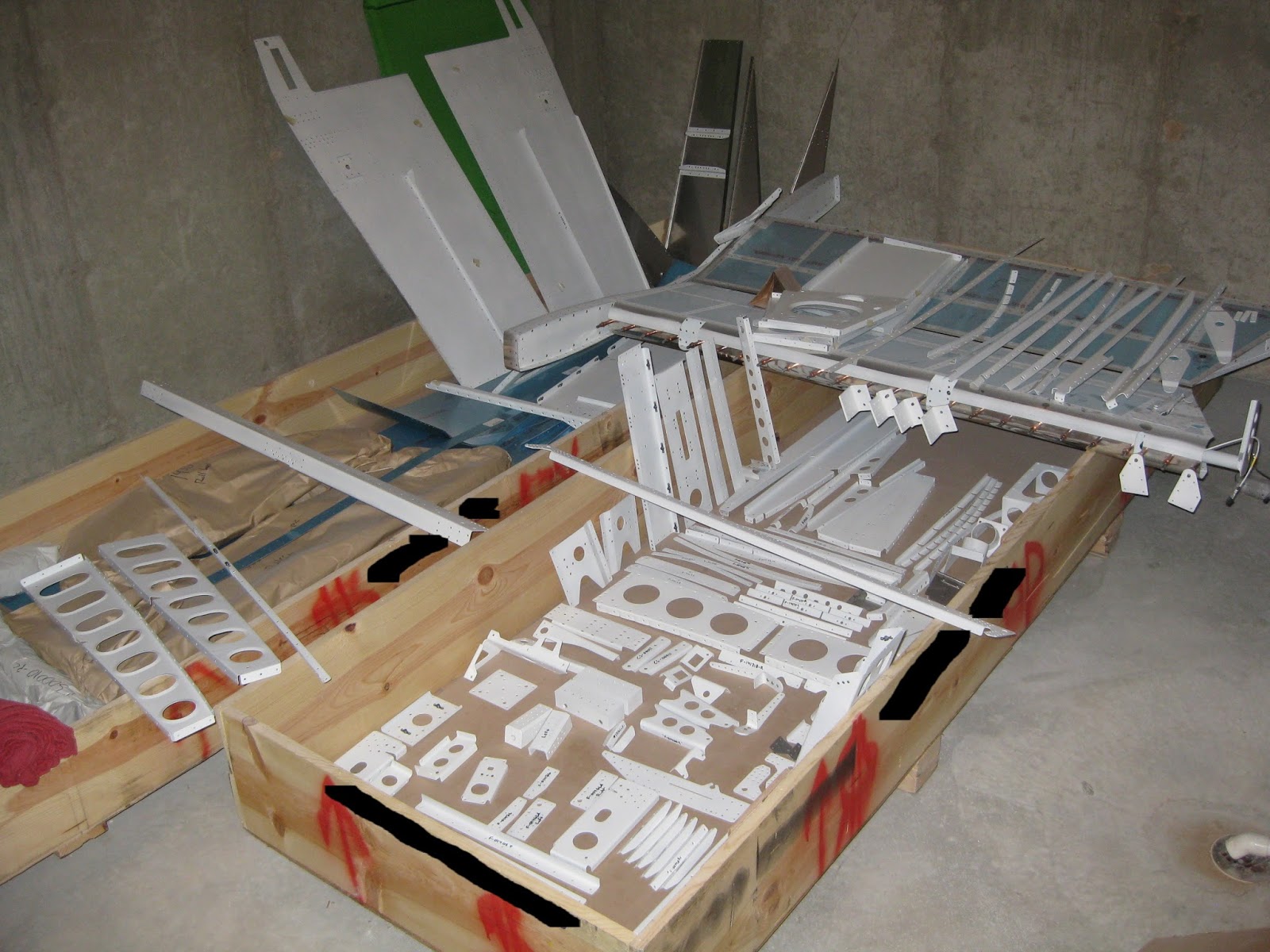Many of the nose gear bracket rivets can be squeezed. But not all. For those that were bucked, I couldn't always find a way to keep all the shop heads pointed in the same direction because the rivet set was just too big to negotiate into the tight confines of the part. So here are a few pictures showing how things ultimately ended up. Each side turned out the same, mirror-image-wise. The four black marks on the inboard image (right) identify the corners of the gear bracket. The brackets are grey due to spot priming after some final drilling.


It is my suggestion to not rivet the F-14104 support angle until you use it to drill the F-6115 rudder pedal bearing blocks (bag 3061) as required much later on page 33-05. It's a quick 2 minute job and would be much easier to do without the support angle attached to the left tunnel side assembly. Luckily I saw this prior to attaching the left tunnel side assembly to the firewall.
When bucking the rivets along the F-01401F-R firewall angle, my back-rivet plate slipped (it has to sit on the edge due to a "bump out" in the firewall). So I ended up bucking the angle into the thin air against the plate's edge. Whoops. Both sides shown below. I sanded out the damage to the aft side of the angle. The damage to the stainless isn't a big deal. It's not aluminum.
But, I decided to remove the entire damaged angle to replace it. Here's what both sides of that damaged angle looked like. It really wasn't bad, but I think replacing it was the right thing to do.
So when I replaced the ~$10 angle 2.5 weeks later, I was very careful to ensure that neither my back rivet plates nor work were going to move. And, of course, that the plates don't overlap the "bump out".
And here are the completed left and right tunnel side assemblies. The dust is just the result from a routine
recent priming session, which is why one wears a
mask when priming.
The rivets called for attaching the gussets (outside corner doublers) are AN426AD4-7. They are too long. I believe that -6.5 is appropriate. The -7 rivets too easily clench over whether they are being back riveted or squeezed. I had to remove about seven rivets for that reason. I did use my
rivet cutter to try setting a -6.5 and it came out just fine. The -7 rivets have tall shop heads and perhaps could be squeezed/bucked a bit beyond the 1.5 diameter spec. The image below shows some rivets over the gusset. You can see how tall the set shop heads are. In fact, the rivet on the bottom right is not perfect, but not bad enough to remove, in my opinion. Some spot priming is also visible, following removal of a few clenched rivets.
You'll notice that the right side firewall half has a small area to the left of the F-01401K
firewall gusset that has some primer removed. Well, I chose to squeeze nearly every rivet (the
longeron yoke
makes that possible), except for those across the F-01401F-L/R angles
(the diagonal ones). I managed to poorly align the squeezer dies
(dice?) and squeezed the gusset, causing visible damage, including a
small crack just on the edge. After some time, I worked it out with
220 grit, removing very little material. I will need to do additional spot
priming over that area. Also, note that the right, middle row rivet isn't ideally set, but it's not worth removing.
To progress further on the firewall requires me to get some tank sealant. The leftover sealant I had from my
fuel tank redo expired 3 months ago. On that topic, I have learned that some folks use other materials for sealing the firewall (
e.g.,
3M 2000+ Fire Barrier Silicone Sealant). There's an
interesting thread about that on VAF (IMHO,
post #38 is the meat). I'm sticking with tank sealant.




































